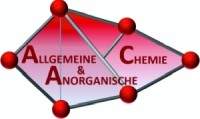Introduction
While multiple bonds between two carbon atoms are ubiquitous in organic chemistry, they are far less common in compounds of carbon's heavier cousin, silicon. This is reflected by the so-called double bond rule. According to this rule multiple bonds become progressively less stable as one proceeds downwards in the periodic table, especially between the 2nd and 3rd row. For instance, while carbon dioxide (CO2) is gaseous at standard conditions and a discrete molecule with two C=O double bonds, silicon dioxide (SiO2, quartz) is an involatile crystalline solid of extremely low solubility, in which each silicon atom bonds to four oxygen atoms via Si-O single bonds.
In the early 1980s, the first stable compound with a Si=Si bond (a so-called disilene) was isolated at room temperature by West, Michl and Fink. The secret of their success was the principle of kinetic stabilization by protection of the molecule's reactive site with bulky substituents. In this case, four mesityl groups (Mes = 2,4,6-trimethylphenyl) formed the protective shell around the highly reactive double bond. In the meantime a large number of stable examples has been reported.

